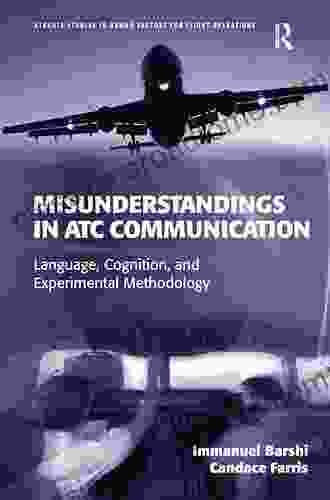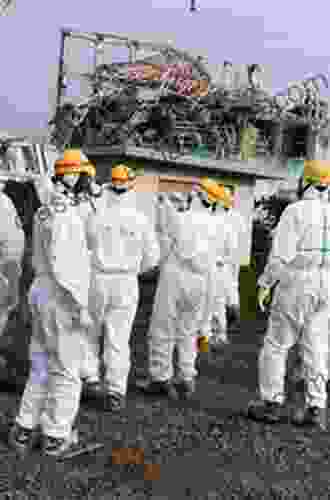The Medical and Ecological Consequences of the Fukushima Nuclear Catastrophe

On March 11, 2011, a massive earthquake and tsunami struck Japan, triggering a nuclear catastrophe at the Fukushima Daiichi Nuclear Power Plant. The disaster released enormous amounts of radiation into the environment, contaminating air, water, and soil. The full extent of the medical and ecological consequences of the Fukushima nuclear catastrophe is still unfolding, but scientists are already seeing a wide range of health effects in humans and animals.
4.4 out of 5
| Language | : | English |
| File size | : | 3733 KB |
| Text-to-Speech | : | Enabled |
| Screen Reader | : | Supported |
| Enhanced typesetting | : | Enabled |
| Print length | : | 256 pages |
| Lending | : | Enabled |
Health Effects in Humans
The most immediate health effect of the Fukushima nuclear catastrophe was an increase in the incidence of thyroid cancer. In the years following the disaster, the number of cases of thyroid cancer in children and adolescents in Fukushima prefecture increased dramatically. Thyroid cancer is a relatively rare cancer, but it is particularly susceptible to radiation exposure. The radiation released from the Fukushima nuclear plant damaged the thyroid glands of children and adolescents, increasing their risk of developing cancer.
In addition to thyroid cancer, scientists are also seeing an increase in the incidence of other types of cancer in Fukushima prefecture. These include leukemia, breast cancer, and lung cancer. It is too early to say definitively whether these increases are due to the Fukushima nuclear catastrophe, but the timing and location of the increase suggest that radiation exposure may be a factor.
The Fukushima nuclear catastrophe also caused a wide range of other health effects in humans, including:
- Birth defects
- Miscarriages
- Premature births
- Low birth weight
- Developmental delays
- Immune system disFree Downloads
- Mental health problems
Ecological Effects
The Fukushima nuclear catastrophe also had a devastating impact on the environment. The radiation released into the environment contaminated air, water, and soil, killing wildlife and damaging marine ecosystems. The radioactive contamination also spread to other parts of Japan and to other countries around the world.
The most immediate ecological effect of the Fukushima nuclear catastrophe was the death of wildlife. Animals that were exposed to high levels of radiation died quickly, while others that were exposed to lower levels of radiation developed health problems and died later. The radiation also damaged the reproductive systems of animals, reducing their ability to reproduce.
The Fukushima nuclear catastrophe also caused damage to marine ecosystems. The radiation released into the ocean contaminated fish and shellfish, making them unsafe to eat. The radiation also damaged coral reefs and other marine habitats.
The ecological effects of the Fukushima nuclear catastrophe are still unfolding, but scientists are already seeing a wide range of impacts on wildlife and marine ecosystems.
The Fukushima nuclear catastrophe was a major disaster with far-reaching consequences. The full extent of the medical and ecological consequences of the disaster is still unfolding, but scientists are already seeing a wide range of health effects in humans and animals. The Fukushima nuclear catastrophe is a wake-up call for the world. We need to take steps to reduce our dependence on nuclear power and to develop safer, more sustainable sources of energy.
4.4 out of 5
| Language | : | English |
| File size | : | 3733 KB |
| Text-to-Speech | : | Enabled |
| Screen Reader | : | Supported |
| Enhanced typesetting | : | Enabled |
| Print length | : | 256 pages |
| Lending | : | Enabled |
Do you want to contribute by writing guest posts on this blog?
Please contact us and send us a resume of previous articles that you have written.
 Book
Book Novel
Novel Page
Page Chapter
Chapter Text
Text Story
Story Genre
Genre Reader
Reader Library
Library Paperback
Paperback E-book
E-book Magazine
Magazine Newspaper
Newspaper Paragraph
Paragraph Sentence
Sentence Bookmark
Bookmark Shelf
Shelf Glossary
Glossary Bibliography
Bibliography Foreword
Foreword Preface
Preface Synopsis
Synopsis Annotation
Annotation Footnote
Footnote Manuscript
Manuscript Scroll
Scroll Codex
Codex Tome
Tome Bestseller
Bestseller Classics
Classics Library card
Library card Narrative
Narrative Biography
Biography Autobiography
Autobiography Memoir
Memoir Reference
Reference Encyclopedia
Encyclopedia Lydia Greeves
Lydia Greeves Michael Osiris Snuffin
Michael Osiris Snuffin Andrea Lieberstein
Andrea Lieberstein Ami Mckay
Ami Mckay Bruce Hartpence
Bruce Hartpence Andrew Razeghi
Andrew Razeghi Elad Segev
Elad Segev Ember Grant
Ember Grant Emily Grabham
Emily Grabham Mal Sharpe
Mal Sharpe Michael Stone
Michael Stone Ana Marinho
Ana Marinho Angelina Black
Angelina Black Paul Bennett
Paul Bennett Andrew E Hunt
Andrew E Hunt Andrea Marcum
Andrea Marcum Andrew Edwin Jenkins
Andrew Edwin Jenkins Erik Klimczak
Erik Klimczak Ananth Krishnan
Ananth Krishnan Thomas Merton
Thomas Merton
Light bulbAdvertise smarter! Our strategic ad space ensures maximum exposure. Reserve your spot today!

 Dylan MitchellTai Chi Essentials: The Simplified 24 Form - Your Gateway to a Healthier and...
Dylan MitchellTai Chi Essentials: The Simplified 24 Form - Your Gateway to a Healthier and... Chase MorrisFollow ·15.1k
Chase MorrisFollow ·15.1k Clay PowellFollow ·4k
Clay PowellFollow ·4k Gary ReedFollow ·10.9k
Gary ReedFollow ·10.9k Trevor BellFollow ·2.7k
Trevor BellFollow ·2.7k Timothy WardFollow ·18.1k
Timothy WardFollow ·18.1k Gage HayesFollow ·10.1k
Gage HayesFollow ·10.1k Lawrence BellFollow ·17.8k
Lawrence BellFollow ·17.8k Charles DickensFollow ·11.8k
Charles DickensFollow ·11.8k

 Braden Ward
Braden WardThe True Story of Murder and Betrayal
In a small town where...

 W. Somerset Maugham
W. Somerset MaughamUnraveling the Complexities of Human Language: A...
Language is a fundamental aspect of human...

 Ibrahim Blair
Ibrahim BlairTrue Crime Tales That Will Keep You on the Edge of Your...
Prepare to be...

 Rick Nelson
Rick NelsonPatterns In Rhyme: A Journey of Discovery with Patrick...
Welcome to the...

 Edgar Hayes
Edgar HayesWithout Pity: Unmasking the Evil Within
In the realm of true...

 Cooper Bell
Cooper BellFannie Lou Hamer's Indelible Legacy: Unraveling the...
The Black Freedom Movement, a pivotal...
4.4 out of 5
| Language | : | English |
| File size | : | 3733 KB |
| Text-to-Speech | : | Enabled |
| Screen Reader | : | Supported |
| Enhanced typesetting | : | Enabled |
| Print length | : | 256 pages |
| Lending | : | Enabled |










